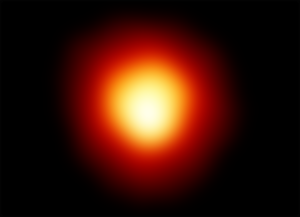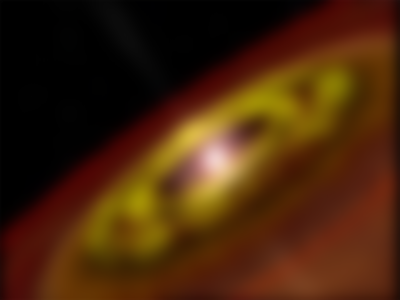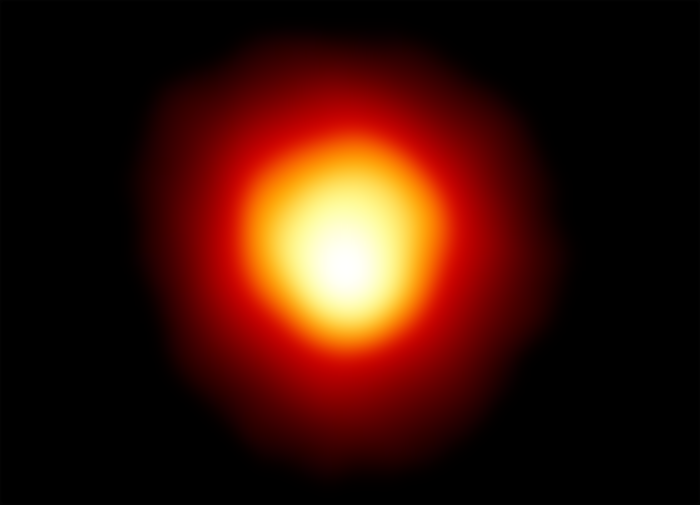
What Are The Different Types of Stars?
A star is a star, isn't that so? Sure there is some distinction as far as shading when you gaze toward the night sky. However, they are in no way different, enormous chunks of gas wrecking to billions of light-years away, correct? All things considered, not actually. In truth, stars are probably as assorted as whatever else in our Universe, tending to be categorized as one of the various orders dependent on its characterizing attributes.
All things considered, there are various sorts of stars, going from small earthy colored smaller people to red and blue supergiants. There are considerably more peculiar sorts of stars, similar to neutron stars and Wolf-Rayet stars. Also, as our investigation of the Universe proceeds, we keep on learning things about stars that drive us to develop how we consider them. We should investigate all the various sorts of stars there are.
1.Protostar:

A protostar is a thing that you have before a star structure. A protostar is an assortment of gas that has fallen from a goliath sub-atomic cloud. The protostar period of heavenly advancement keeps going around 100,000 years. After some time, gravity and weight increment, constraining the protostar to fall. The entirety of the energy delivered by the protostar comes just from the warming brought about by the gravitational energy – atomic combination responses haven't begun at this point.
2.T Tauri Star:

A T Tauri star is a phase in a star's development and advancement just before it turns into a principle arrangement star. This stage happens toward the finish of the protostar stage when the gravitational weight holding the star together is the wellspring of all its energy. T Tauri stars need more weight and temperature at their centers to produce atomic combinations, yet they do take after principle arrangement stars; they're about a similar temperature however more splendid because they're bigger. T Tauri stars can have huge zones of sunspot inclusion, and have exceptional X-beam flares and amazingly ground-breaking heavenly breezes. Stars will stay in the T Tauri stage for around 100 million years.
3.Fundamental Sequence Star:

Most of all stars in our system, and even the Universe, are fundamental grouping stars. Our Sun is a primary succession star, as are our closest neighbors, Sirius and Alpha Centauri A. Principle arrangement stars can change in size, mass, and splendor, however, they're all doing likewise: changing over hydrogen into helium in their centers, delivering a colossal measure of energy.
A star in the principle arrangement is in a condition of hydrostatic balance. Gravity is pulling the star internally, and the light weight from all the combination responses in the star is pushing outward. The internal and outward powers balance each other out, and the star keeps up a circular shape. Stars in the primary succession will have a size that relies upon their mass, which characterizes the measure of gravity pulling them internally.
The lower mass breaking point for a primary succession star is about 0.08 occasions the mass of the Sun or multiple times the mass of Jupiter. This is the base measure of gravitational weight you have to touch off combination in the center. Stars can hypothetically develop to more than multiple times the mass of the Sun.
4.Red Giant Star:

At the point when a star has burned-through its supply of hydrogen in its center, the combination stops and the star no longer produces an outward strain to neutralize the internal weight arranging it. A shell of hydrogen around the center touches off proceeding with the life of the star yet purposes it to increment in size significantly. The maturing star has become a red monster star and can be multiple times bigger than it was in its primary arrangement stage. At the point when this hydrogen fuel is spent, further shells of helium and significantly heavier components can be burned-through in implantation responses. The red goliath period of a star's life will just last a couple hundred million years before it runs out of fuel totally and turns into a white smaller person.
5.White Dwarf Star:

At the point when a star has run out of hydrogen fuel in its center and it does not have the mass to compel higher components into combination response, it turns into a white small star. The outward lightweight from the combination response stops and the star falls internal under its gravity. A white bantam sparkles since it was a hot star once, yet no combination responses are occurring any longer. A white bantam will simply chill off until it turns into the foundation temperature of the Universe. This cycle will take many billions of years, so no white diminutive people have chilled off that far yet.
6.Red Dwarf Star:

Red small stars are the most well-known sort of stars in the Universe. These are fundamental succession stars however they have such low mass that they're a lot cooler than stars like our Sun. They have another preferred position. Red small stars can keep the hydrogen fuel blending into their center, thus they can preserve their fuel for any longer than different stars. Space experts gauge that some red small stars will consume for 10 trillion years. The littlest red midgets are 0.075 occasions the mass of the Sun, and they can have a mass of up to half of the Sun.
7.Neutron Stars:

On the off chance that a star has somewhere in the range of 1.35 and 2.1 occasions the mass of the Sun, it doesn't shape a white bantam when it kicks the bucket. All things considered, the star bites the dust in a calamitous supernova blast, and the excess center turns into a neutron star. As its name infers, a neutron star is an outlandish sort of star that is made completely out of neutrons. This is because the extreme gravity of the neutron star pounds protons and electrons together to frame neutrons. If stars are significantly more gigantic, they will become dark openings rather than neutron stars after the supernova goes off.
8.Supergiant Stars:

The biggest stars in the Universe are supergiant stars. These are beasts with many occasions the mass of the Sun. Not at all like a generally steady star like the Sun, supergiants are devouring hydrogen fuel at a tremendous rate and will burn-through all the fuel in their centers inside only a couple million years. Supergiant stars live quickly and pass on youthful, exploding as supernovae; deteriorating themselves all the while.
As should be obvious, stars come in numerous sizes, tones, and assortments. Understanding what represents this, and what their different life stages resemble, are exceedingly significant with regards to understanding our Universe. It additionally causes with regards to our progressing endeavors to investigate our nearby heavenly area, also in the chase for extra-earthly life!
Related Articles:
the-12-disciples-of-jesus-christ
top-6-animals-that-almost-be-extinct








